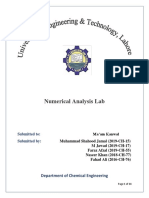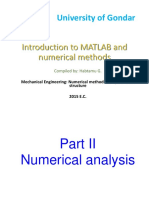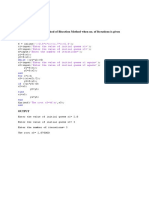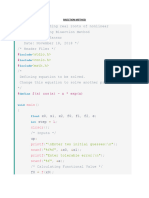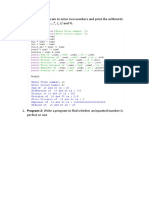0% found this document useful (0 votes)
25 views30 pagesNM Matlab Code Yadu
The document provides various numerical methods for solving equations, including Gauss Elimination, Gauss Seidal, Newton Raphson, Trapezoidal Rule, Simpson's Rules, Bisection Method, and Gauss Quadrature. Each method is accompanied by MATLAB code snippets, example outputs, and solver commands demonstrating their application. The methods are designed for different types of mathematical problems, such as finding roots, integration, and solving systems of equations.
Uploaded by
messing.aryan.patilCopyright
© © All Rights Reserved
We take content rights seriously. If you suspect this is your content, claim it here.
Available Formats
Download as DOCX, PDF, TXT or read online on Scribd
0% found this document useful (0 votes)
25 views30 pagesNM Matlab Code Yadu
The document provides various numerical methods for solving equations, including Gauss Elimination, Gauss Seidal, Newton Raphson, Trapezoidal Rule, Simpson's Rules, Bisection Method, and Gauss Quadrature. Each method is accompanied by MATLAB code snippets, example outputs, and solver commands demonstrating their application. The methods are designed for different types of mathematical problems, such as finding roots, integration, and solving systems of equations.
Uploaded by
messing.aryan.patilCopyright
© © All Rights Reserved
We take content rights seriously. If you suspect this is your content, claim it here.
Available Formats
Download as DOCX, PDF, TXT or read online on Scribd
/ 30

















